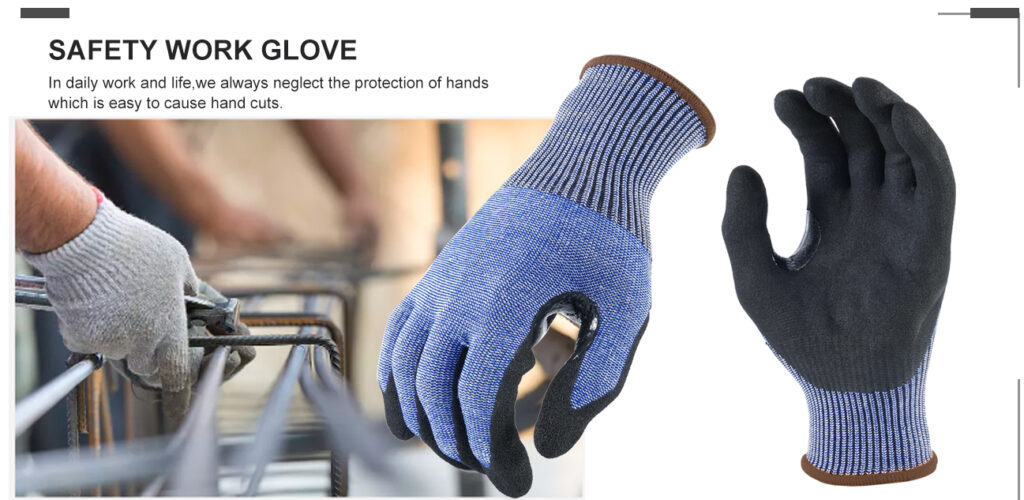
Protecting your hands at work starts with choosing the right safety gloves. But with so many options, how do you ensure you're making the best choice? Let’s break it down.
The right safety gloves depend on your job's specific hazards, offering protection for cuts, impacts, chemicals, or extreme conditions. Match the glove's features to your task requirements.
Think about this: your gloves aren't just a workplace accessory. They're your first line of defense against injuries. Keep reading to discover how to choose the perfect pair.
How to choose the right safety gloves?
Selecting the perfect safety gloves can be overwhelming, especially when safety and efficiency are at stake. Here's how to approach it systematically.
Understand your work environment's hazards first, then match the gloves to the protection you need, whether it's cut-resistance, impact protection, or chemical resistance.

Matching gloves to workplace hazards
-
Identify workplace risks: Are you dealing with sharp objects, heat, chemicals, or heavy equipment? Each hazard requires specific protection.
- Cut-resistant gloves: Ideal for construction, glass handling, or metalwork.
- Chemical-resistant gloves: Essential for chemical manufacturing or lab work.
- Impact-resistant gloves: Perfect for heavy-duty industries like mining or logistics.
-
Understand material differences: Gloves are made from different materials to cater to specific needs:
- Nitrile gloves: Great for chemical resistance.
- Leather gloves: Durable and resistant to abrasions.
- Kevlar gloves: Strong against cuts and punctures.
-
Assess comfort vs. protection: While safety is the priority, uncomfortable gloves may hinder productivity. Balance protection with comfort.
| Hazard | Recommended Gloves |
|---|---|
| Sharp objects | Cut-resistant gloves |
| Chemical exposure | Chemical-resistant gloves |
| Heavy machinery | Impact-resistant gloves |
| General tasks | Leather or multipurpose gloves |
Once you have this clarity, choosing the right gloves becomes much easier.
How to choose work gloves?
Work gloves vary widely in design and use. Understanding these differences is key to selecting the most suitable pair for your tasks.
Focus on the glove's durability, flexibility, and specific safety certifications to ensure it meets the demands of your work environment.
Factors to consider when selecting work gloves
-
Durability for long-term use: A glove that wears out quickly increases costs and risks.
- For heavy-duty jobs, choose reinforced gloves.
- For light tasks, consider thinner gloves that maximize dexterity.
-
Flexibility vs. protection: Highly protective gloves may limit hand movements, while lighter gloves offer flexibility but less protection. Balance these based on your tasks.
-
CE certification: Ensure the gloves meet safety standards like EN 388 or EN 374, which indicate resistance levels to cuts, abrasions, chemicals, or impacts.
-
Customization options: For industries with specific needs, consider custom gloves with features tailored to your work environment.
| Key Features | Why It Matters |
|---|---|
| Durability | Reduces long-term costs |
| Flexibility | Improves productivity |
| CE Certification | Guarantees safety standards |
| Customization | Tailors to specific tasks |
Understanding these factors will help you invest in the right gloves, ensuring both safety and efficiency.
How do you find the right glove fit for working?
A proper glove fit is crucial for safety, comfort, and performance. Ill-fitting gloves can be both dangerous and distracting.
Choose gloves that snugly fit your hands without restricting movement, ensuring dexterity, comfort, and maximum protection.

Measuring your hands for the perfect fit
- Measure your hand size: Use a tape measure around your palm to determine your glove size. This ensures a snug and secure fit.
- Try before you buy: If possible, try on the gloves to assess fit and comfort. Look for:
- No gaps between your fingers and the glove tips.
- Comfortable wrist closure without pinching.
- Adjustable designs: Many gloves now feature adjustable straps for a secure fit, reducing slippage during work.
| Fit Issues | Problems They Cause |
|---|---|
| Too loose | Reduced grip, higher risk |
| Too tight | Hand fatigue, limited range |
| Perfect fit | Maximum protection & control |
By focusing on fit, you’ll ensure both safety and all-day comfort.
What is the standard for safety gloves?
Safety gloves are designed and certified according to international standards. Knowing these standards helps you verify a glove's reliability.
The EN 388 and EN 374 standards are widely recognized for safety gloves, rating their resistance to cuts, abrasions, punctures, and chemicals.
Dive deeper: Understanding safety standards
-
EN 388 for mechanical risks: This standard measures performance in four key areas:
- Abrasion resistance
- Blade cut resistance
- Tear resistance
- Puncture resistance
Gloves receive ratings from 1 to 4 for each category, with higher numbers indicating better performance.
-
EN 374 for chemical risks: This standard ensures gloves are resistant to specific chemicals. Always check the chemical compatibility of the gloves you choose.
-
ISO certifications: Some gloves may also meet ISO 13997 standards, which provide additional cut resistance levels.
| Standard | Use Case |
|---|---|
| EN 388 | Mechanical risks |
| EN 374 | Chemical risks |
| ISO 13997 | Advanced cut resistance |
By checking these certifications, you’ll ensure your gloves meet the required safety levels for your tasks.
Conclusion
Choosing the right safety gloves means balancing protection, comfort, and task-specific features. A perfect pair safeguards your hands while enhancing work efficiency.
